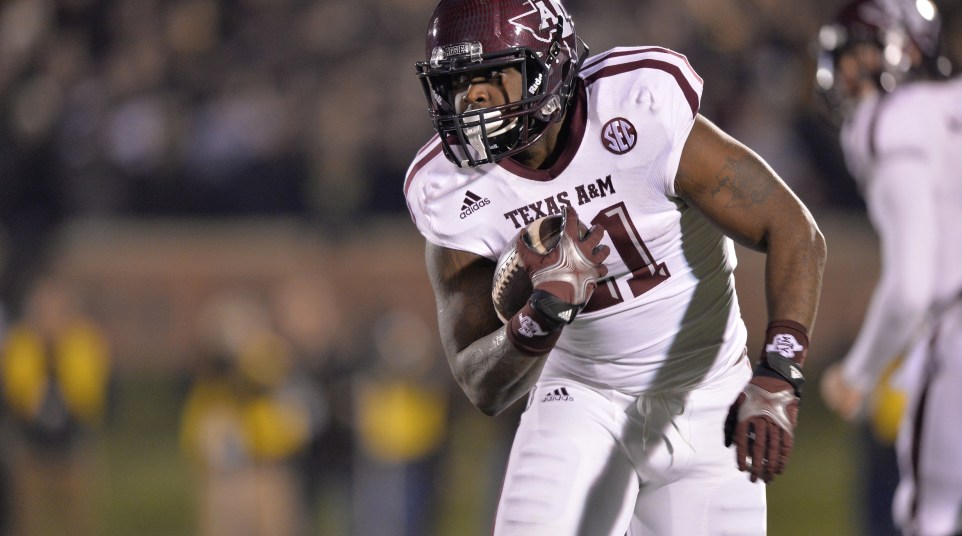Texas A&M overhauls its running game for 2015
HOOVER, Ala. — Texas A&M coach Kevin Sumlin didn’t disguise his thoughts in coachspeak.
The Aggies were too soft in 2014, he proclaimed last week.
While defensive coordinator John “The Chief” Chavis represents the sexy hire deemed capable of reversing that detestible football label, Dave Christensen is a more important solution.
Hired as the team’s new offensive line coach and running game coordinator, Christensen is executing as many localized renovations as the construction crews streaming in and out of Kyle Field all offseason.
First, the wide-angle lens: Sumlin envisions that a more powerful running game will a) allow the team more situational versatility, like third-and-short or when leading in the second half of games, and b) provide a tremendous boost to the defense by giving that unit good practice looks so that it’s not shell-shocked when it faces elite SEC running games on the field.
More on that from Sumlin:
“Obviously the defensive change makes a big difference in style of play schematically, but also Dave Christensen being a run game coordinator … we need not only for us offensively to be better and be able to run when we want to and need to, but also to help our defense in the manner that we practice and have a physical aspect to our football team that I think we were lacking last year.”
That leads us to the close-up snapshot.
Christensen will institute a number of drastic changes to Texas A&M’s running game, which has fallen from No. 1 in the SEC (242 yards per game and 5.9 yards per carry in 2012) to No. 10 to No. 12.
Expect wider splits between the Aggies offensive linemen. A hallmark of Christensen’s previous offenses at Mizzou, Wyoming and Utah is spreading out defenses and using the entire field. This merges well with A&M’s passing game, which shouldn’t change much. The idea is that this will create more open spaces for the running backs.
The main change is that the team will add several gap scheme runs, which are much different than the popular zone-read concepts used so well by teams like Auburn and Tennessee. Rather than blocking an area of the field as a unit, gap scheme runs institute rules for every lineman. Following those rules helps a lineman determine which defender he’s supposed to block.
Often, gap scheme runs include a pulling guard, some type of lead blocker in the form of an H-back or fullback, and a number of backside blocks by everyone else. (To get super nerdy, watch the video below.)
A&M will be asking more of guards Joseph Cheek and Jermaine Eluemenor. And Tra Carson, the 6-foot, 235-pound bruiser who should get the most carries, has to be thrilled with the developments. The team has lost an offensive tackle to the first round of the NFL draft for the last three seasons, but continues to possess pro talent along the line. Germain Ifedi and Mike Matthews both represented the team at SEC Media Days.
In other words, the Aggies should have all the pieces necessary to blast defenses off the ball on occasion.
Many Utah fans hold disdain toward Christensen, figuring he failed to develop the team’s quarterback play. But Devontae Booker ran for 1,512 yards last season for the Utes.
Texas A&M’s running game has been dismissed as a lesser priority in the last two years, at least by some outsiders. After all, is it really that important that the Aggies run the ball well when the team’s passing numbers are astronomical?
But Sumlin’s assertions are correct. If these changes are successful, Texas A&M will be more physical on offense, better suited to protecting leads, its defense will be better prepared for games and, most important of all, the Aggies will be able to give the defense more rest.
The success of the ’15 Aggies could depend more on the changes made by Christensen than the ones wrought by Chavis.

